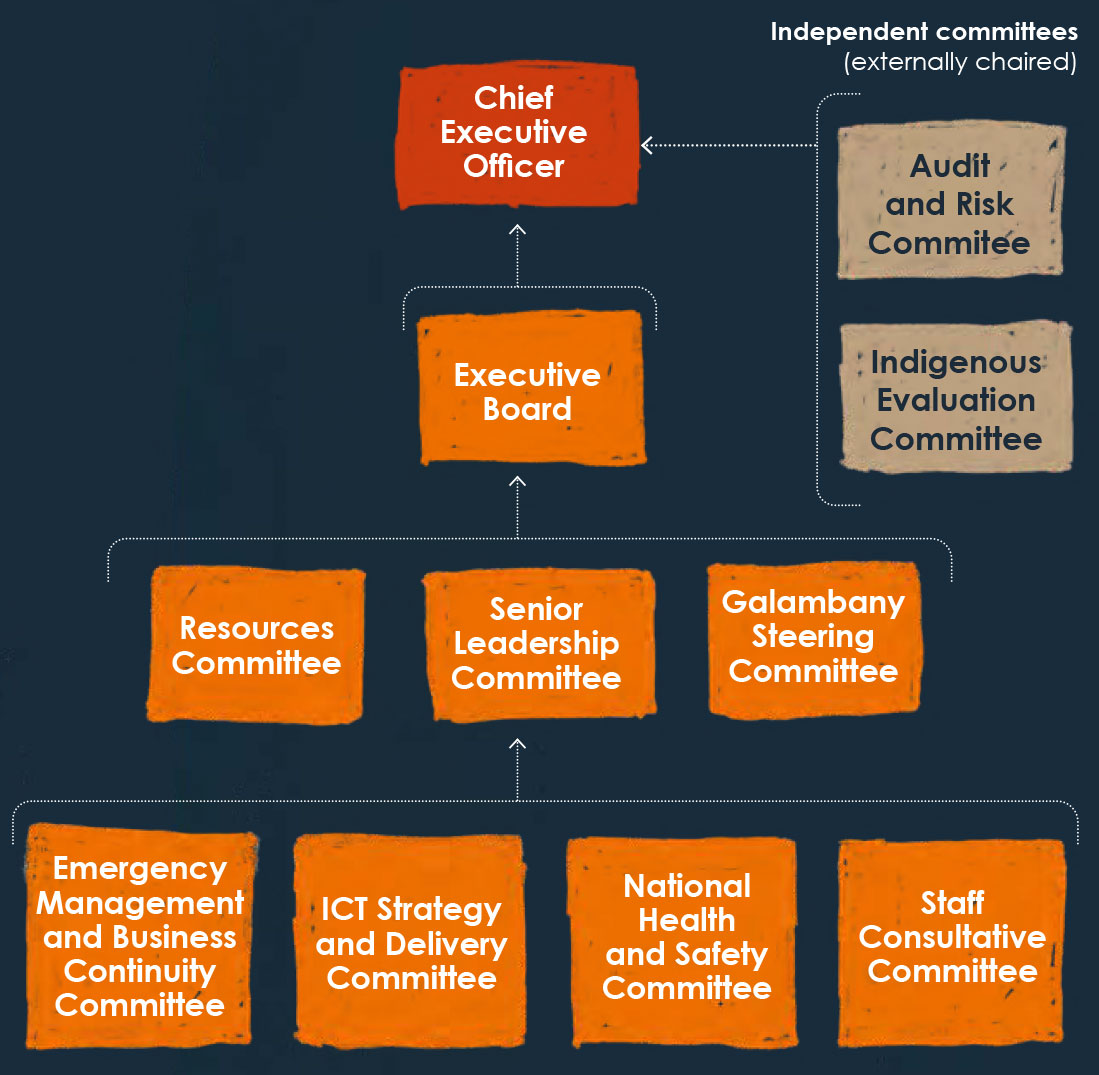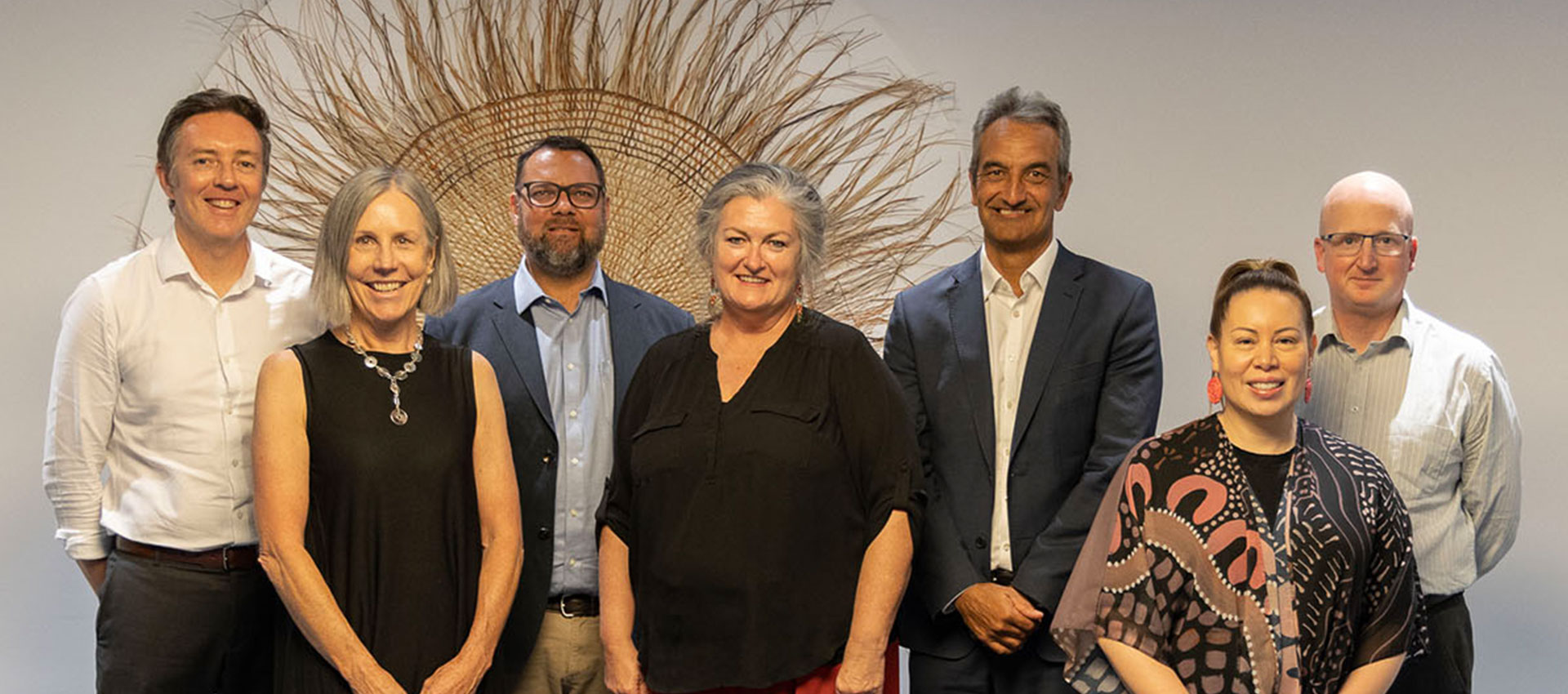The NIAA’s governance structure and operating model ensure accountability, transparency and integrity across our organisation. This structure enables effective decision-making and supports the Chief Executive Officer (CEO) as the NIAA Accountable Authority.
The Executive Board sets the strategic direction of our organisation. Several committees assist the Executive Board, each focusing on different operational areas. This committee structure enhances our organisational capability and culture.
Our committees play a key role in overseeing operational activities, managing risks and ensuring regulatory compliance. These committees are essential for our continuous improvement efforts in governance and management practices. The NIAA governance arrangements include 2 committees that provide independent advice to the executive through the appointment of external members.
The Audit and Risk Committee provides the CEO with independent advice on the appropriateness of NIAA’s:
- financial reporting
- performance reporting
- system of risk oversight and management
- internal controls.

The Indigenous Evaluation Committee

Image: The Indigenous Evaluation Committee, Canberra, Australian Capital Territory
The Indigenous Evaluation Committee offers independent technical and strategic advice on program evaluation and performance reporting. It plays a vital role in:
- enhancing the quality, credibility and impact of our policies and programs
- strengthening evaluation processes to ensure initiatives effectively meet Indigenous community needs.
Our governance and management practices are dynamic and evolve to meet new challenges and opportunities. We are committed to continuous improvement, always seeking ways to enhance accountability, transparency and integrity. This commitment ensures we remain effective in delivering our purpose and supporting our CEO as the Accountable Authority.
We are committed to continuous improvement.